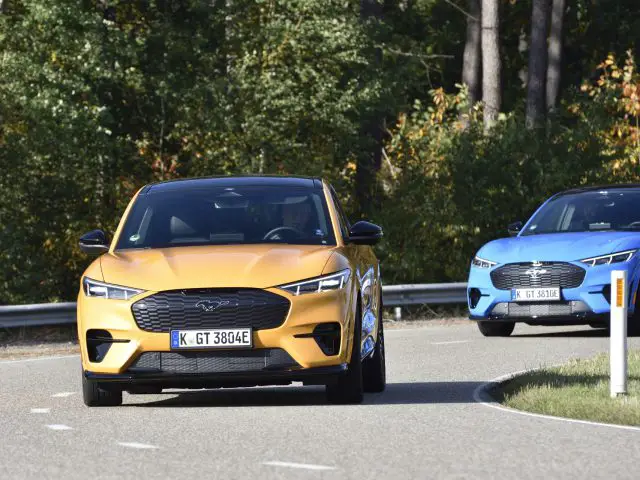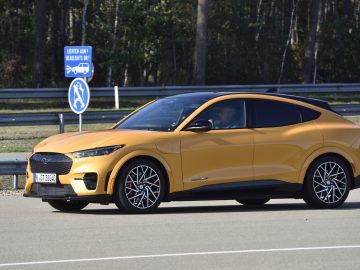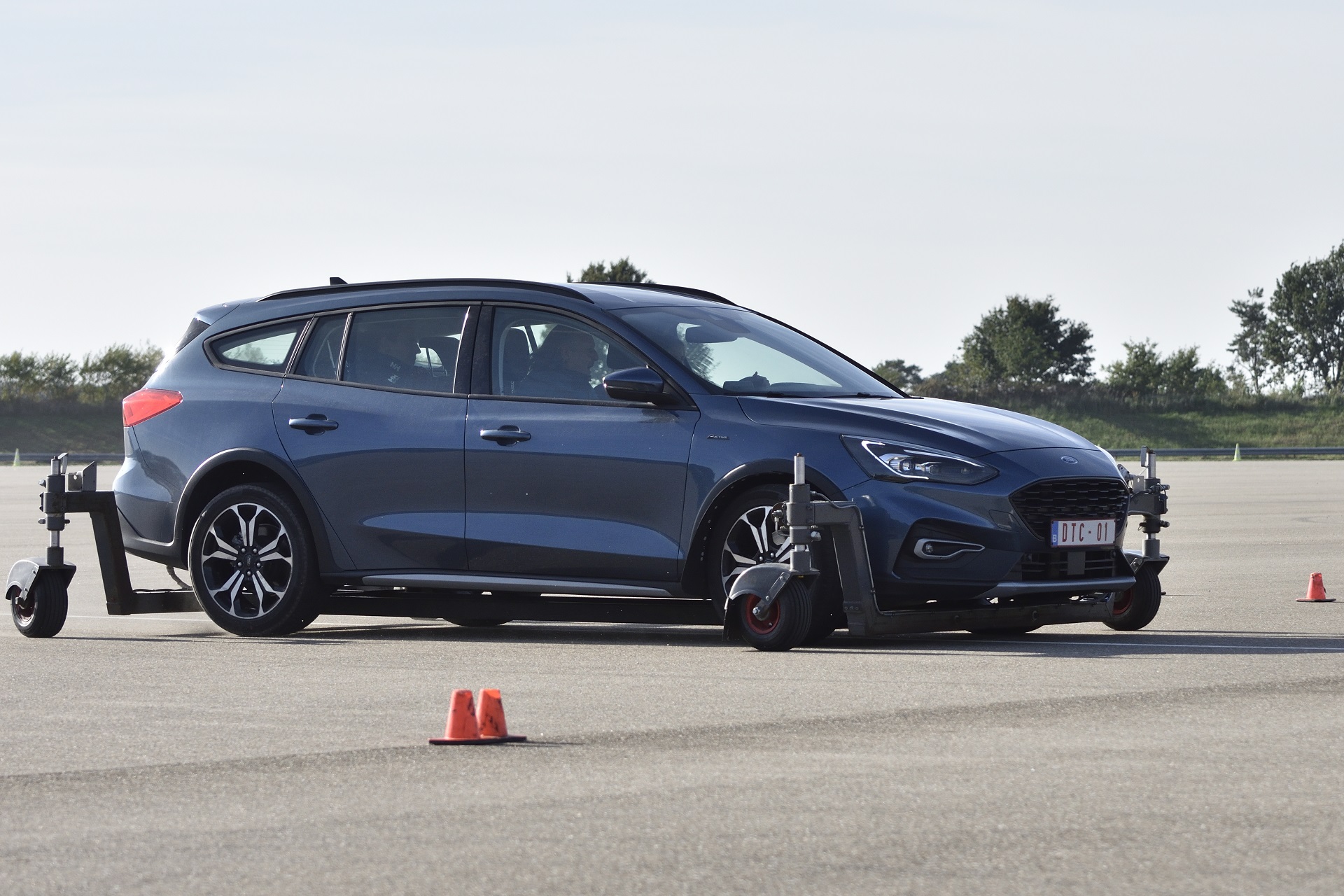A Ford with side wheels is quite normal in Lommel
Those who wanted professional driving skills training had to go to Slotemakers in Zandvoort or the Driving Skills Center in Lelystad. Good news for those who live in the south of the country – or also want to try another provider: from now on, you can also visit Ford at their test site in Lommel.
Ford in Lommel
Ever since 1965, Ford has had a test track near the small Belgian town of Lommel, just across the border from Eindhoven. Meanwhile, that test track has grown into an entire test complex, where on more than a hundred kilometers of test tracks with all kinds of simulated road and weather conditions the new models of Ford – and other brands! – be prepared for series production.
Driving training
All that testing frequently involves pushing the limit. So Ford’s test drivers do know how to keep a car under control in the most challenging conditions. The brand is eager to share that knowledge. Therefore, for many years, driving skills training has been given to future test drivers, for example, as well as to test drivers from other brands.


For a few years now, by special arrangement, companies have also been able to provide their employees with driving skills training. This year the training offer has been further expanded, as from now on individuals are also welcome to brush up on their driving skills.
The range of driving skills training is diverse. From basic courses to learning to drive very powerful cars. There are several driving skills training sessions, always under the guidance of a professional test driver. The price of training ranges from about 250 to 550 euros. The full range of training courses and associated fees can be found on the Ford Driver Training Center website.
Driving skills training 1: emergency braking and swerve, not yet as simple as it seems
AutoRAI.co.uk has been invited to try some of the workouts for themselves. These are the emergency stop with evasion test, a basic skid course and following the ideal line on a “circuit. We’ll start with that first one and get behind the wheel of a Ford Mustang Mach-E GT. That’s off to a good start, although this test is not about driving for a while. No, today is mostly about safe car handling.
Making an emergency stop is just a matter of braking hard, right? Yes, but there are still quite a few things to consider, the trial quickly makes clear. The test is as follows: I drive off at 60 km/h towards a blockade of pylons. Only at the very last moment may I swerve, either to the left or to the right. However, to keep an element of surprise in it, I do not get to brake and swerve until the instructor gives the signal. Sounds simple, right?
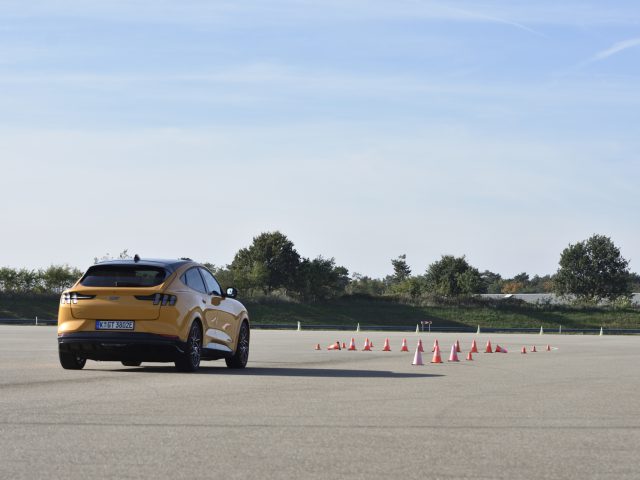
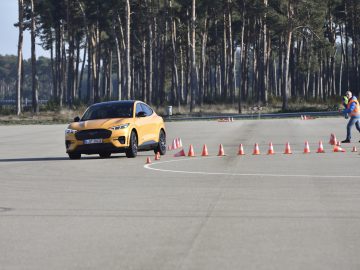
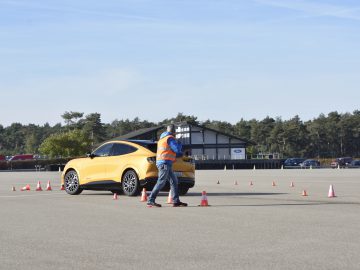
Oops…no ABS?
I drive toward the pylons, get the signal from the instructor and … with an understeered turn I still slide right through part of the pylons … Has the ABS been secretly turned off? No. Apparently, I did not subconsciously brake with full force after all, so the ABS did not activate. A lesson in advance: in an emergency stop, always depress the brake pedal really fully in one go.
Pressing the brake full on can be exciting, especially in a real-world emergency, but know that ABS (and when swerve, ESP as well) really do keep you on the road. Make sure that after you swerve, you do not release the brake until the car is back in the desired direction of travel (unless you have stopped before, of course), otherwise the car may still shoot off in an unexpected direction.
As the trial progresses, the difficulty is first increased by increasing the speed a bit. Then there is also a mandatory fallback direction, which you are also only told at the very last moment. The biggest challenge here, as far as I’m concerned, is waiting for the sign. To your senses, you have long since had to take action to avoid the pylons. Although I swerve to the “wrong” side a time or two, within a few attempts I manage to refine even that very late swerve.
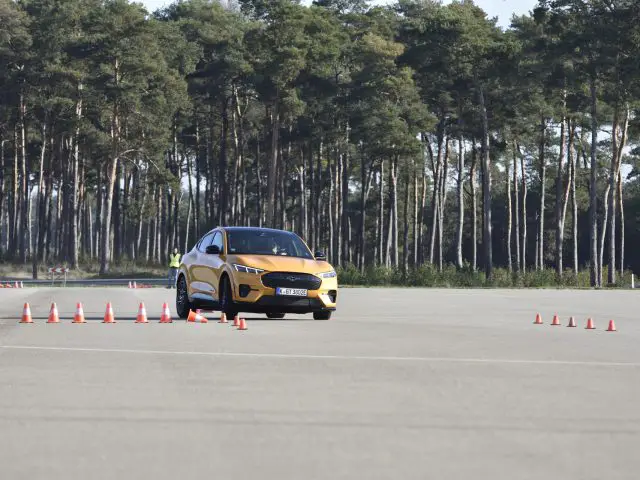
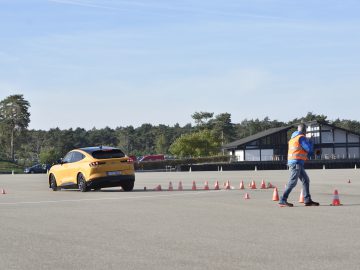
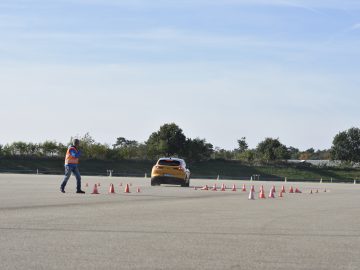
The most important lesson?
Other than really applying the brakes full force, the most important lesson is actually that even at the very last moment, you still have a fine chance to avoid the “obstacle. All modern cars have ABS and ESP and those systems help you control the car well. The instructor also gives another tip for steering technique: push the steering wheel away from you. To take a right turn as an example, don’t pull the steering wheel down with your right hand, but push the steering wheel up with your left hand. Not only does that steer easier, you immediately push yourself more firmly into your seat.
Driving skill training 2: controlled skidding
We move on to the basic skid course. For that, we switch to a manual Ford Focus Wagon, which is equipped with side wheels. Those side wheels lift the rear of the car slightly, to simulate the effect of little (or no) grip. When the rear end breaks out, the trick is to counter-steer immediately and (because it is a front-wheel-drive car) use the gas to straighten the car out again. All this while continuing to follow the trail (or “road”) of course.
In doing so, it is important to look at where you want the car to go, rather than where you are in danger of skidding. That looking where you want to go I knew, but apparently you have to look even further ahead than I thought. Not to the end of the turn you are working on, but actually even to the next turn. Also not unimportant: be aware that the car often tends to “swerve” in the opposite direction after a skid. You will also have to accommodate that (sometimes severe) body motion with counter-steering if necessary.
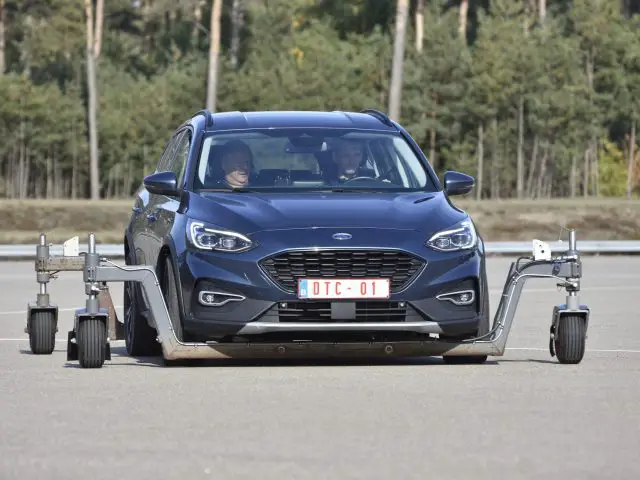

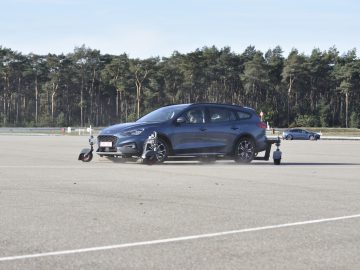
I manage to cope with the Ford slipping well, but as the test progresses the driving speed is increased slightly. Twice I put the Ford backwards anyway because I was just too late with counter-steering and/or corrective throttle. After some more practice, we finally manage to put down a pretty nice “drift,” or in other words, guide the Ford Focus through the corner and into the next one in a controlled manner.
The most important lesson?
The most important lesson for me is to look even further ahead, but for “fine tuning” surely the steering techniques as described above. Especially really making it your own. You can know the theory, but at moment suprême you also have to apply it out of automatism. To be on the safe side, driving with one hand on the wheel may be relaxing, but it is not useful in this kind of tricky situation. Despite having to overpower, you steer faster with two hands and also have more grip on the steering wheel.
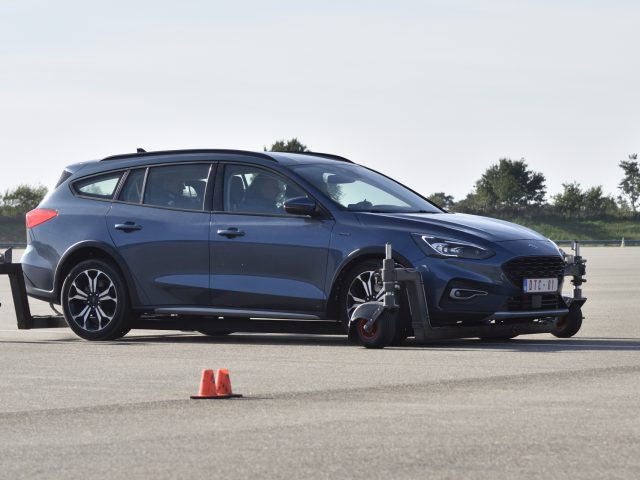

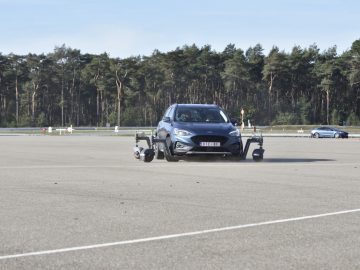
Driving skills training 3: the ideal line
Of course it is important to know how to act in an emergency situation, but driving fun is not forgotten in driving skills training either. We get back into the Ford Mustang Mach-E GT and head onto Test Track 7 to practice the ideal line. In doing so, you ride alone in the car, following the instructor. In that sense, it’s a simple exercise: you just follow the line the instructor drives.
The most important lesson?
With this exercise, it is mostly fun sport riding, but there is, of course, a lesson in it. The most important lesson is that sometimes the ideal line is different than you might expect. You don’t necessarily take the shortest possible turn, but rather sometimes have to take the longer outside turn in order to be able to tap the so-called apex (the most “inside” point of the entire turn) at the end of the turn and thus get out of the turn the fastest.

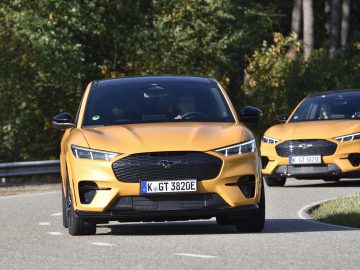
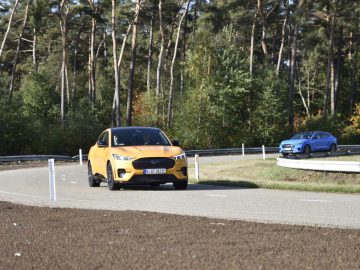
The Ford Mustang Mach-E GT
With all that exercise, you would almost forget that the Mustang Mach-E GT is a very fun toy. An output of 358 kW (487 hp) and 860 Nm of torque are obviously a recipe for impressive performance, such as a 0-100 time of 3.7 seconds. In the process, there is even a sporty sound. It will largely be produced through the speakers, but it still adds to the driving experience.
During the exercises, both swerve and the ideal line, it is also apparent that the Mach-E GT has very good handling. We didn’t push the limit (except a little when swerve), but during our practice laps for the ideal line, it did rain. Even on that soaking wet track, the Mustang Mach-E seems to stick to the road. In the fastest corners he allows a slight slide, but the real limit does not seem to be in sight yet. Even on a wet, twisty cobblestone road, the Mustang holds its desired course.
